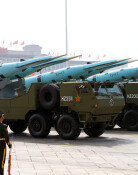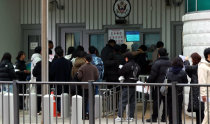Lets Make Money: North Koreans Rush to the Market
Lets Make Money: North Koreans Rush to the Market
Posted July. 04, 2005 03:12,
The most prominent difference to be witnessed on the streets of Pyongyang in July of 2005 was the colorful and diverse clothes North Koreans passed by in.
Women clad themselves in a colorful array of clothes instead of the standard black skirt-white Jeogori (Korean traditional shirt) look. On a hot day, the ladies will go for a bright hat, and on a rainy day, a bright pair of rain boots. They were very stylish as well, many of them apparently no less so than young ladies seen in Myeong-dong, South Korea.
Men, too, changed from their usual sordid greenish inminbok (peoples clothes) looks to clean-cut looks with bright shirts without ties and black or navy pairs of suit pants.
Perhaps North Korean authorities handed out nice clothes to their residents, mindful of the group of South Korean visitors. If not, Pyongyang fashion says it all about the three years of North Koreas economic reform. Our coverage leads us to the latter conclusion. After three years of reform, whether the North Korean leaders like it or not, North Koreas economy is now steered by individuals rather than the nation or a group. Individuals have emerged in the forefront of the economy and with that change, trade has been expanding.
Now, individuals with a talent for moneymaking can make high-end purchases without having to hide. Pink dresses, parasols, red rain boots, and the like have now become symbols of wealth among North Koreans.
It is no surprise that sophisticated Chinese clothes can be seen frequently in the streets of Pyongyang, because they represent an increase in external trade after the economic reform of 2002.
Many changes were recognized in many places in North Korea that I visited 15 months after my last visit in April of 2004.
Suk-Ho Shin kyle@donga.com







